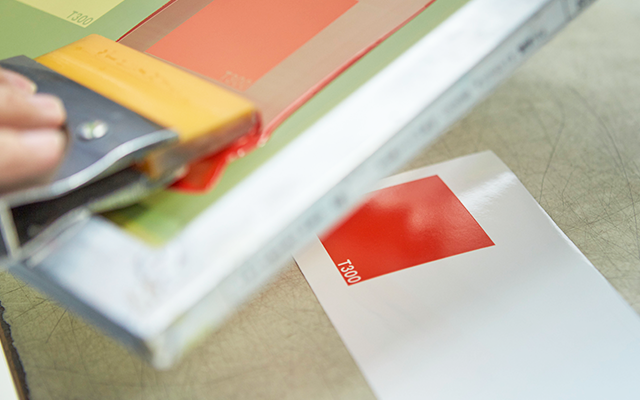- GENERAL USES
UV INK
INTRODUCTIONS
JUJO CHEMICAL has been developing UV inks that cures instantly with ultra-violet lay(UV), and that produces ink film with excellent properties. Our UV inks, RC INK, now meet the various applications.
The demand for UV inks has been remarkably increased recently. This literature explains more details of UV inks than what are explained in the literature of each ink series.
1. HOW TO USE UV INK
(1) Adjusting room temperature
Viscosity of UV ink is much affected by the temperature(high temperature : low viscosity, low temperature: high viscosity). That gives big influences to printability and thickness of the coating. Generally speaking, the viscosity-increase by low temperature leads to thick ink film; the viscosity-decrease by high temperature leads to thin ink film. If the viscosity is too high, ink does not go through the mesh smoothly, which may cause bubbles or pin-holes. It is advised to keep the temperature of the work-place at 18-25°C(64-77°F).
Some kinds of ink absorb humidity when the work-place is humid. That may make the ink viscous or gel. If the work-place is humid, it is necessary to control the humidity by air-conditioner or dehumidifier.
(2) Screen mesh
Finer mesh than 300/inch is recommended to print standard colored inks. Sol thickness must be thinner than 10 microns. Under these conditions, the thickness of the ink film becomes 10-12 microns. Coverage will be 70-90 sq.m/kg. The printers can use coarser mesh to print clear inks. Choose suitable screen depending on the applications.
(3) Squeegee
Use urethane squeegee with the hardness of 65-80 to obtain fine reproducibility. Make the edge of the squeegee sharp. As monomer contained in the ink may spoil the squeegee, polish the squeegee or use several squeegees in rotation.
(4) Adjusting viscosity
Ink is supplied in ready-to-use condition. Stir well before use. Add REDUCER up to 10% when lower viscosity is required. When higher viscosity is required, add MATT CLEAR INK(that is high-viscous compound) or add matting agent such as JA-244 and JAR-20. Mix them well before use.
(5) Adjusting density
Add CLEAR INK or EXTENDER to adjust density of the ink.
(6) Influence of the light
It is necessary to shut out direct sunlight during printing or washing up screens. Fluorescent lights would be no problem unless they are used at a short distance.
(7) Standard curing conditions
Please refer to the literature of each ink series for the standard curing conditions.
(8) Pre-test
Actual curing conditions depend on the substrates and printing conditions. Curing may be affected depending on the UV dryer. Be sure to perform trial print before commercial run to fix the actual curing conditions.
The process of trial run is;
- Print the ink on a test piece and cure it under the standard conditions.
- Examine the tackiness, adhesion, scratch resistance, bending resistance or other necessary properties.
- If the results are not satisfactory, adjust the curing conditions of the UV dryer.
Repeat the above mentioned test until the satisfactory results can be obtained.
It is advised to measure integral light using light-measuring devices.
(9) Pre-heating
It is recommended to heat up the substrate before UV cure when good adhesion is hard to be obtained. It improves adhesion to heat the substrate with near-infrared light or far-infrared light for 15-90 seconds.
2. UV LAMP, UV DRYER
(1) UV lamp
As ink film obtained by screen printing is thicker than that by other printing methods, high-power lamp(>120W/cm) is recommended. Choose the type of the lamp that brings the light into focus. Although both high-pressure mercury lamp and metal-halide lamp can be used, metal halide lamp is more recommendable due to its high integral light.
(2) UV dryer
There are air-cooling system and water-cooling system. Both can be used. It is better to attach cold mirror and IR-cutting filter to air-cooling type of dryer because intercoat adhesion or distortion may be a problem when the temperature becomes too high with air-cooling system.
(3) Life of UV lamp
There is a life to UV lamp. Efficiency of the lamp degrades with time. Measure the integral light occasionally to examine if the efficiency of the lamp is still good. When UV lamp degrades, curing and adhesion are influenced. Change the lamp to new one at earlier stage.
3. FACTORS THAT INFLUENCE UV CURE
(1) Type and color of the substrate
There are substrates and colors that absorb UV more than other ones. They make curing slower. Curing may change depending on the grade of the substrates even though they are of the same kind.
(2) Color of the ink(quality of pigment and influence of color-matching)
The pigments that absorb more UV make curing slower. The more these pigments are contained, the slower curing becomes. Therefore, there is a limitation to the density and opacity of UV ink. Curing of matched colors may be poorer than each standard color which is used to make these matched colors. Printers must be careful of such matched colors as the mixture of opaque white plus other dark colors like black and blue.
(3) Photo-initiator
It is advised to add photo-initiator, JAR-2, JAR-8, JAR-15, to improve curing. Too much addition spoils curing. Printers are advised to be careful how much to be added.(up to 4%)
(4) Thickness of ink film
The thinner the ink film is, the better curing is. Standard colors are designed to have good curing at 10-12 microns. Thicker ink film than 15 microns may result in poor adhesion due to insufficient curing. CLEAR INKS cure even if ink film is thicker than 100 microns.
(5) UV power W/sq.cm and integral light J/sq.cm
There are two ways to measure curing: UV power and integral light.
UV power is, as explained in 2-a, decided by lamp power and the type of the lamp. UV power plus curing time make the integral light. Integral light changes depending on the number of the lamps and curing time with different conveyor speed.
Although geneal curing efficiency is measured by the integral light, UV power has more effects to the thickness of the ink film stated in 3-d and inner curing. If UV power is not strong enough, inner curing cannot be improved even if the integral light is increased by more curing time. In this case, lower the height of the lamp or strengthen the lamp power.
(6) Temperature of UV dryer and pre-heating
Environmental temperature of UV irradiation gives much influence to curing. The higher the temperature is, the better curing is. For this reason, pre-heating before UV irradiation improves curing, which leads to good adhesion.
4. PRECAUTIONS
(1) Skin irritation(P.I.I)
There is a index to show the safety of UV ink, which is P.I.I. for skin irritation.
P.I.I. Value:
- 0-1.9(low), 2.0-2.9(medium low), 3.0-5.9(medium), 6.0-8.0(high)
P.I.I.value of our RC INK is lower than 1.9. Although the ink is low-irritant, it is recommended to avoid skin contact. If the ink contacts with skin, wash it off immediately with soap and water. Skin contact may not be noticed due to its low P.I.I. If the ink stays on the skin for a long time, skin may get inflamed.
(2) Intercoat adhesion
When several hits are printed, printers must pay attention to intercoat adhesion. If the bottom layer is cured too much, the adhesion between lower ink and upper ink becomes poor. Adjust curing conditions to avoid this problem.
(3) Distortion
Stickers and thin films curl up by the heat of UV irradiation. As black and other dark color inks absorb heat well, curling up or distortion tends to happen especially to these colors. Adjust curing conditions or adopting cooling system as counter-measures.
(4) Mesh pattern of conveyor shows
Mesh pattern of conveyor may show on the printed matters after UV cure. This happens to especially to black ink and thin sheets. This is caused by uneven heating. Choose the conveyor of different material or finer mesh pattern.
(5) Shelf life
Store UV ink in a cool and dark place avoiding direct sunshine. Average shelf life of standard UV ink under these storage conditions is 2 years after manufacture. Ink may gel or increase its viscosity in hotter place than 30°C(86°F). Once the ink is taken out of the container, the storage stability becomes poor. Do not return the ink once taken out to the container.
(6) Stirring
Be sure to stir the ink before use. Some component may be separated. The ink becomes uniform by stirring. Ink may increase its viscosity while stored. Viscosity becomes normal by stirring.
(7) Compatibility of the ink
Generally speaking, one type of UV ink cannot be mixed with other series of UV ink.
(8) Material safety data Sheet (MSDS)
The detailed information of each series is in MSDS. Please refer to MSDS before use.
NOTICE
There are many complicated factors in using UV ink which conventional inks do not have. Good combination of UV dryer, UV ink and printing conditions can bring good results. JUJO CHEMICAL is a integrator of UV system. We have acquired know-hows of using UV inks from our experiences of developing various UV inks for various substrates. JUJO CHEMICAL can offer the printers the knowledge how the better printing can be done. We are sure we can be of help to you when UV system is newly installed in your workshop.
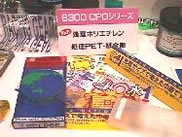 |
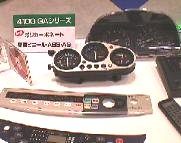 |
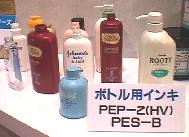 |
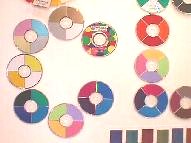 |



